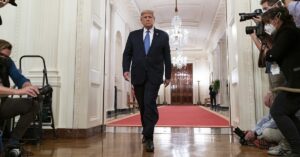Buttigieg and Trump Clashed Over Aviation Safety Standards
In a recent social media eruption, former Transportation Secretary Pete Buttigieg sharply criticized ex-President Donald Trump's statements regarding a recent tragic aviation incident in Washington, D.C., igniting a heated public exchange between them.
Pete Buttigieg used online platforms to defend his aviation safety record while rejecting Donald Trump’s response to a helicopter-plane collision that took 67 lives above the Potomac River.
Following the tragic crash on January 29, Buttigieg labeled Trump’s comments as "despicable." He took to social media to emphasize his efforts to bolster aviation safety while serving as the head of the Department of Transportation. According to Buttigieg, his tenure resulted in minimizing air traffic occurrences and achieving a period with no commercial airline fatalities.
Buttigieg Disputed Trump’s Statements
The former transportation secretary challenged Trump to offer tangible leadership with actionable plans to avert future aviation catastrophes. Buttigieg held Trump responsible for dismissing crucial personnel and implementing policies hindering aviation safety under his administration.
In contrast, Trump negated these claims, affirming that his administration, prior to Joe Biden's presidency and Buttigieg's administration, initiated executive actions aimed at reinstating robust standards for air traffic supervision. Trump stated that the primary focus of these measures was ensuring optimal talent and competence in air traffic controller roles.
Trump further argued that diversity initiatives enacted during Buttigieg's leadership compromised safety measures. Trump's remarks emphasized a meritocracy, insisting that exceptional aptitude and ability were essential qualities for those managing air traffic control.
Reports on FAA Safety Challenges Emerge
In 2023, concerns arose over the Federal Aviation Administration's safety guidelines, with a review attributing some lapses to workforce and financial constraints. Recorded occurrences, such as a United Airlines aircraft coming into collision and another Jetblue narrow escape at Boston Logan, spurred the scrutiny.
Buttigieg asserted that Trump’s administration exacerbated these conditions by purportedly offering financial incentives to federal employees, including air traffic controllers, to vacate their positions. He questioned the accuracy and intentions behind such offers, highlighting the complexities of the issue involving federal team reductions.
Meanwhile, the buyouts supposedly proposed by Trump's administration were declared non-relevant for air traffic controllers, challenging Buttigieg's assertions. Trump's administration maintained these terms, despite persistent workforce shortages within this critical aviation sector. Notably, the D.C. Air Traffic Control remained at a reduced strength of 85%, underscoring the challenges facing the FAA.
Trump Questions Past Aviation Leadership
The former president leveled further criticisms at Buttigieg, questioning his managerial efficacy. Trump referred to him as unsuccessful in both his roles as a mayor and within the Department of Transportation, accentuating a strained administrative history.
Amid ongoing national debates over aviation safety, Buttigieg urged the federal government and Trump to exhibit effective leadership and responsibility, facilitating a safer aviation environment. He cited instances where federal measures failed to assure safer skies, inviting further scrutiny on administrative leadership and responsiveness.
Safety in Aviation Under the Spotlight
Through this public dispute, both figures articulated their perspectives, shedding light on their respective administration policies regarding aviation safety. As they traded verbal blows, the necessity for coherent policy direction and effective administration in safeguarding American skies remained as pertinent as ever.
Regardless of the outcome in specific policy positions, Buttigieg and Trump’s dialogue reflected a broader discussion on the need for transparent governance toward resolving crucial infrastructural challenges.
While they diverged in their policy emphasis, this episode has highlighted the significance of leadership accountability in public safety sectors. It instantiates conversation regarding substantive progress in shaping consistent aviation safety standards.




